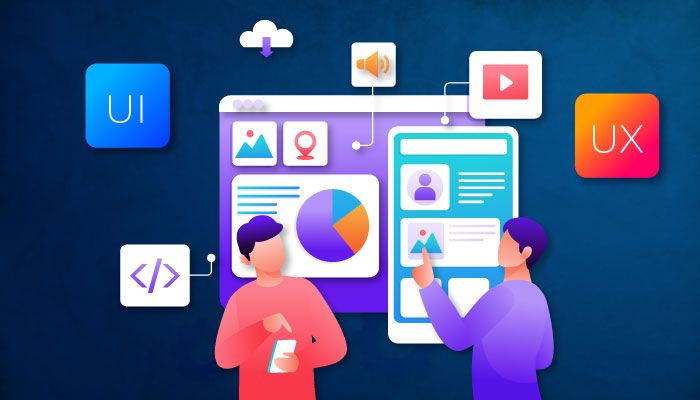Key Trends Shaping Mobile App Development in 2023

Mobile app development has become an integral part of businesses and individuals’ lives alike. With the proliferation of smart phones and other mobile devices, people are increasingly relying on mobile apps for everyday tasks, from social networking to shopping, banking, and entertainment. Mobile app development is crucial because it enables businesses to reach their customers on-the-go, provide personalized services, and improve engagement and brand loyalty.
As we enter 2023, Mobile App Development Company continues to evolve rapidly, driven by changing consumer needs and emerging technologies. This evolution brings with it new trends that will shape the landscape of mobile app development for the year ahead.
Some of the key trends that we can expect to see in 2023 include the rise of low-code and no-code app development, the integration of artificial intelligence and machine learning, the increasing adoption of blockchain technology, and the growing importance of mobile app security.
These trends will have a significant impact on how businesses approach mobile app development, and staying up-to-date with them will be crucial for any organization looking to succeed in the mobile-first world.
The Rise of Mobile App Development in 2023
Mobile application development has skyrocketed in recent years and this growth is only accelerating in 2023. More companies are recognizing the importance of apps to achieve key business goals like customer engagement, service delivery, data insights and operational efficiency. Advancements in technologies, tools and user needs/demands are driving demand.
Companies now expect their mobile apps to provide intuitive, personalized experiences using features like AI, AR/VR, 3D designs and spatial computing. Users want seamless transitions between digital and physical spaces with options such as mobile payments, product visualizations in-store and location-based services. These “phygital” apps require development skills and integrations spanning both realms.
4 Key Trends that Businesses Must Follow in 2023
As technology advances rapidly, businesses must evolve alongside to stay competitive in 2023. Key trends include implementing automation and AI, enhancing virtual/phygital experiences, improving team collaboration, ensuring data security/compliance, and developing adaptive learning cultures. By future-proofing strategies and fostering innovation, businesses can harness new opportunities, better serve changing user needs, and build sustainable success.
AI and Machine Learning in Mobile App Development
AI and ML are transforming mobile app development by enabling new features and optimizing development processes. ML helps personalize content and recommendations for individual users based on behaviors, interests and location. Some real-world examples include apps like Snapchat using ML for filters, eBay using AI for fraud detection and Duolingo using AI to improve translation accuracy.
As AI and ML advance further, they offer substantial benefits for mobile app development. ML can improve app design by identifying key user needs, journeys and KPIs. AI enhances app testing by generating test cases, detecting bugs faster and simulating edge devices/networks.
ML streamlines development by recommending optimized workflows, tools/techniques for given projects and alerts around changes impacting features or platforms. Over time, ML may even generate simple apps, bots or software components itself based on strategies and goals.
5G Technology and Its Impact on Mobile App Development
5G technology brings significant benefits to mobile app development including faster speeds, lower latency, increased capacity and more stable connections. Faster speeds enable new features like 4K video streaming, online VR/AR experiences and HD map viewing in apps. Lower latency improve responsiveness and use cases such as autonomous vehicle control, remote surgery assistance and online collaboration.
Additional capacity and bandwidth support growth in internet-connected devices, sensor integrations and real-time data. This enables possibilities such as smart cities with connected infrastructure, smart healthcare using mobile medical carts or smart manufacturing leveraging robotics on the production floor. Some examples of 5G in current apps include VR shopping experiences, smart stadium stats/highlights reels and 3D 360-degree maps for location scouting.
Read Also:- Enhance Invoice Processing Using RPA
Looking ahead, 5G could transform mobile apps through advances like edge computing, massive IoT connectivity and new platform integrations. Edge computing brings processing power closer to where data is generated, enabling faster insight and decisions at the network edge. Massive IoT connectivity expands sensors/systems integrated into apps for real-time analysis and optimization.
Integration with Wearables and IoT Devices
Wearables and IoT devices are being increasingly integrated with mobile apps to provide enhanced functionality and experiences. Smartwatches deliver notifications, messages, payments and more directly to users’ wrists. Fitness trackers and health monitors synce data with health/wellness apps for insights into activity, nutrition, sleep and medical metrics. Smart home devices like thermostats, lights, and security systems connect mobile apps to control the home environment remotely.
Some examples of wearables/IoT in mobile apps include Nike+ Run Club integrating with Nike wearables, Healing Touch using smart watches for guided meditation, and UAWear connecting smart glasses to translate conversations on-the-go. August Smart Locks integrate with mobile apps for smartphone-based door locking/unlocking. Fitbit syncs step and health data with fitness apps like Strava and Headspace. Gyms use IoT sensors to provide personalized coach feedback through mobile apps.
Increased Focus on User Privacy and Security
User privacy and security are crucial for mobile app development due to strict regulations, serious consequences and rising digital risk. Laws like GDPR and HIPAA impose hefty fines for privacy/security violations. Breaches compromise sensitive data, damage trust and brand reputation. Malware, phishing attacks and fraud target mobile apps/users with increasing sophistication.
Some examples highlighting the need for improved privacy/security in mobile apps include Facebook’s Cambridge Analytica scandal, TikTok’s data collection concerns, health app vulnerabilities allowing patient record access and election interference via mobile disinformation campaigns. Hackers also leverage mobile app acquisition data, SMS permissions and cloud access to conduct mischievous activity at scale.
Looking ahead, new responsibilities around privacy/security will shape the future of mobile app development. This includes implementing principles like privacy by design, limiting data collection, using encryption and anonymization, providing transparency and control over user data. It means conducting risk analysis for new features, ongoing monitoring for threats and prompt response procedures. It entails improving user education on digital risks, how their data/activity informs experiences and best practices to stay safe in mobile apps.
Low-Code and No-Code Development Platforms
Low-code and no-code development platforms provide key benefits for mobile app development including reduced costs, accelerated time-to-market, broadened developer resources and increased flexibility.
Costs are lower with shorter development cycles, less reliant on expensive technical resources and simpler platform/tooling requirements. Non-technical and citizen developers can build basic apps, prototypes, automations and more using these platforms, expanding the pool of available development skills. And greater flexibility comes from easier changes/iterations and integrations with various business systems/tools (API-friendly capabilities).
Some examples of low-code/no-code platforms include AppSheet, Zapier, Pipefy, Tallyfy, and ZeroHop. Businesses are using them to create internal tools, lightweight customer apps, workflow automations, report builders, and integrations between departmental systems.
A Zapier zap integrates marketing/sales handoffs by sending email leads as new contacts/deals. A Pipefy pipe drives business process optimization by streamlining employee onboarding end-to-end. An AppSheet app provides field service workers an offline-capable app to improve productivity/data quality.
Conclusion
Several key trends will shape mobile app development in 2023 including growth of low-code/no-code tools, advancement of AI and ML, integration of wearables/IoT, increased focus on privacy/security, and rollout of 5G networks. These trends promise innovation and also introduce complexity. The future of development will be one of immense possibility and responsibility.
Mobile app developers must keep learning, pivot strategies and build with these trends in mind. Learn new skills around low-code, AI, privacy/security and 5G to reach their potential. Pivot to balance cutting-edge features with risk management. And build innovative solutions that empower users, unlock business value and build trust.




